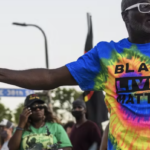WASHINGTON, Jan. 21. 2015 — To commemorate and celebrate the contributions to our nation made by people of African descent, American historian Carter G. Woodson established Black History Week.
The first celebration occurred on Feb. 12, 1926. For many years, the second week of February was set aside for this celebration to coincide with the birthdays of abolitionist/editor Frederick Douglass and Abraham Lincoln. In 1976, as part of the nation’s bicentennial, the week was expanded into Black History Month. Each year, U.S. presidents proclaim February as National African-American History Month.
Note: The reference to the black population in this publication is to single-race blacks (“black alone”) except in the first section on “Population.” In that section the reference is to black alone or in combination with other races; a reference to respondents who said they were one race (black) or more than one race (black plus other races).
Population
45.0 million
The number of blacks, either alone or in combination with one or more other races, on July 1, 2013, up 1.0 percent from July 1, 2012. Source: Population Estimates
www.factfinder.census.gov/faces/tableservices/jsf/pages/productview.xhtml?src=bkmk
74.5 million
The projected black, either alone or in combination, population of the United States (including those of more than one race) for July 1, 2060. On that date, according to the projection, blacks would constitute 17.9 percent of the nation’s total population. Source: Population projections Table 10 /www.census.gov/population/projections/data/national/2014/summarytables.html
3.7 million
The black population in New York, which led all states as of July 1, 2013. Texas had the largest numeric increase since 2012 (78,000). The District of Columbia had the highest percentage of blacks (51.0 percent), followed by Mississippi (38.1 percent). Source: Population Estimates www.census.gov/newsroom/press-releases/2014/cb14-118.html
1.3 million
Cook County, Ill. (Chicago) had the largest black population of any county in 2013 (1.3 million), and Harris, Texas (Houston) had the largest numeric increase since 2012 (18,000). Holmes, Miss., was the county with the highest percentage of blacks in the nation (83.2 percent). Source: Population Estimates www.census.gov/newsroom/press-releases/2014/cb14-118.html
Serving Our Nation
2.2 million
Number of black military veterans in the United States in 2013. Source: 2013 American Community Survey www.factfinder.census.gov/faces/tableservices/jsf/pages/productview.xhtml?src=bkmk
Education
83.7%
The percentage of blacks 25 and over with a high school diploma or higher in 2013. Source: 2013 American Community Survey www.factfinder.census.gov/faces/tableservices/jsf/pages/productview.xhtml?src=bkmk
19.3%
The percentage of blacks 25 and over who had a bachelor’s degree or higher in 2013. Source: 2013 American Community Survey
www.factfinder.census.gov/faces/tableservices/jsf/pages/productview.xhtml?src=bkmk
1.7 million
Among blacks 25 and over, the number who had an advanced degree in 2013. Source: 2013 American Community Survey
www.factfinder.census.gov/faces/tableservices/jsf/pages/productview.xhtml?src=bkmk
3.0 million
Number of blacks enrolled in undergraduate college in 2013 compared with 2.6 million in 2008, a 17.5 percent increase. Source: 2013 American Community Survey
www.factfinder2.census.gov/bkmk/table/1.0/en/ACS/13_1YR/B14007B
http://factfinder2.census.gov/bkmk/table/1.0/en/ACS/08_1YR/B14007B
Voting
17.8 million
The number of blacks who voted in the 2012 presidential election. In comparison to the 2008 election, about 1.7 million additional black voters reported going to the polls in 2012.
Source: The Diversifying Electorate — Voting Rates by Race and Hispanic Origin 2012 http://www.census.gov/prod/2013pubs/p20-568.pdf
66.2%
Percent of blacks who voted in the 2012 presidential election, higher than the 64.1 percent of non-Hispanic whites who did so. This marks the first time that blacks have voted at a higher rate than whites since the Census Bureau started publishing statistics on voting by the eligible citizen population in 1996. Source: The Diversifying Electorate — Voting Rates by Race and Hispanic Origin 2012 http://www.census.gov/prod/2013pubs/p20-568.pdf
Income, Poverty and Health Insurance
$34,598
The annual median income of black households in 2013, compared with the nation at $51,939.
Source: U.S. Census Bureau, Income, Poverty and Health Insurance Coverage in the United States: 2013
http://www.census.gov/content/dam/Census/library/publications/2014/demo/p60-249.pdf
27.2%
Poverty rate in 2013 for blacks, while nationally it was 14.5 percent. Source: U.S. Census Bureau, Income, Poverty and Health Insurance Coverage in the United States: 2013
http://www.census.gov/content/dam/Census/library/publications/2014/demo/p60-249.pdf
84.1%
Percentage of blacks that were covered by health insurance during all or part of 2013. Nationally, 86.6 percent of all races were covered by health insurance.
Source: U.S. Census Bureau, Health Insurance Coverage in the United States: 2013
http://www.census.gov/content/dam/Census/library/publications/2014/demo/p60-250.pdf
Families and Children
61.8%
Among households with a black householder, the percentage that contained a family in 2013. There were 9.8 million black family households. Source: 2013 Current Population Survey, Families and Living Arrangements, Table HH-1 and F1
www.census.gov/hhes/families/data/cps2013H.html
45.7%
Among families with black householders, the percentage that were married couples in 2013.
Source: 2013 Current Population Survey, Families and Living Arrangements, Table F1
http://www.census.gov/hhes/families/data/cps2013F.html
1.3 million
Number of black grandparents who lived with their own grandchildren younger than 18 in 2013. Of this number, 45.2 percent were also responsible for their care. Source: 2013 American Community Survey www.factfinder2.census.gov/bkmk/table/1.0/en/ACS/13_1YR/B10051B
Jobs
28.1%
The percentage of civilian employed blacks 16 and over who worked in management, business, science and arts occupations, while 36.3 percent of the total civilian employed population worked in these occupations. Source: 2013 American Community Survey
www.factfinder2.census.gov/bkmk/table/1.0/en/ACS/13_1YR/S0201//popgroup~004
www.factfinder2.census.gov/bkmk/table/1.0/en/ACS/13_1YR/S0201
Editor’s note: The preceding data were collected from a variety of sources and may be subject to sampling variability and other sources of error. Facts for Features are customarily released about two months before an observance in order to accommodate magazine production timelines. Questions or comments should be directed to the Census Bureau’s Public Information Office: telephone: 301-763-3030; or e-mail: pio@census.gov.











